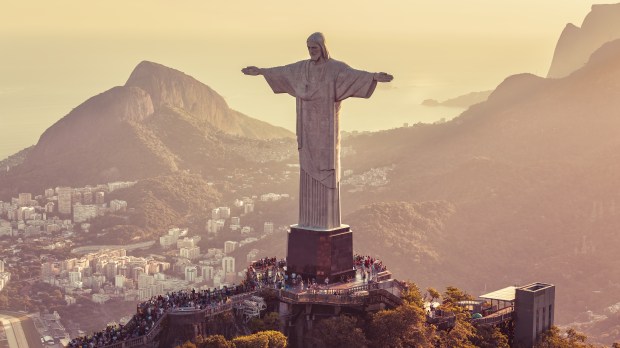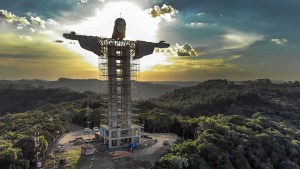The inauguration of the statue of Christ the Redeemer in Rio de Janeiro took place on October 12, 1931. The monument—one of Brazil’s most famous landmarks—is the third largest statue of Christ in the world. It’s 125 ft tall and weighs just over 1,100 tons.
The statue was named one of the New Seven Wonders of the World and took five years to complete. The project was created by Polish-French sculptor Paul Landowski and built by the Brazilian engineer Heitor da Silva Costa, in collaboration with the French engineer Albert Caquot.
The master builder and overseer for the architectural project was Heitor Levy. He lived on top of Corcovado (the peak on which the sculpture stands) during the years of construction to closely follow the work of building the monument.
A nearly fatal accident
Everyone said that the work on Christ the Redeemer received many blessings, because no serious accidents were recorded at the construction site.
However, the master builder himself, Heitor Levy, almost lost his life during his work at the site.
Levy plummeted from a scaffolding and almost fell into an abyss. The Archdiocese of Rio de Janeiro’s website reports: “The project did not have firm ground to support the scaffolding, as the base of the peak is only 15 meters in diameter, less than half of what is needed to cover the expanse between the monument’s fingertips,” and it’s surrounded on three sides by cliffs hundreds of feet high.
The engineer tripped over the scaffolding and was saved by the workers. He shared his memories about what happened:
Everywhere, all around us, at our feet, the precipice. At the slightest carelessness, at the slightest failure of the material, one wrong placement of a foot and it was certain death, falling off the cliff. I could’ve foreseen a disastrous fall, which only did not come true by the will of the Supreme Being. But all this is in the past, memories of the work. We have before us the image of Christ, with his arms open to welcome our sufferings and our prayers.
His conversion
Levy was Jewish, but after the accident he converted to Catholicism. Levy even wrote the names of his family members on a scroll and kept it inside the interior part of the heart of the Christ the Redeemer statue, which is located at the height of the eighth landing.
The monument, incidentally, is an image of the Sacred Heart of Jesus. It was precisely from the top of Corcovado hill, where the monument is located, that the consecration of Brazil to the Sacred Heart of Jesus took place, on October 12, 1931, with the inauguration of the statue.
In short, the conversion of the engineer is a literal example of one of the promises of the Sacred Heart, which says, “The people who spread this devotion will have their name inscribed forever in my heart.”


